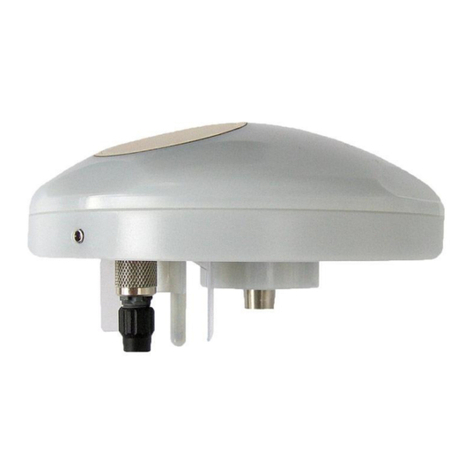3 - 70 71130/11E/0318
Contents
1Model.............................................................................................................................6
2Application.....................................................................................................................6
3Mode of operation..........................................................................................................9
3.1 Wind measurement:............................................................................................................9
3.1.1 Measuring principle: Wind speed and direction ............................................................9
3.1.2 Measuring principle: Acoustic virtual temperature ......................................................10
3.2 Temperature and humidity measurement: ........................................................................11
3.3 Air pressure:.....................................................................................................................11
3.4 Brightness: .......................................................................................................................11
3.5 Precipitation:.....................................................................................................................11
3.5.1 Measuring principle: Precipitation:..............................................................................11
3.5.2 Type of precipitation (Synop Code):...........................................................................12
4Storage and handling of the WEATHER STATION .....................................................13
5Installation of WEATHER STATION............................................................................13
5.1 Selection of installation site...............................................................................................13
5.2 Mechanical installation......................................................................................................14
5.2.1 Alignment to north......................................................................................................14
5.3 Electrical installation.........................................................................................................15
5.3.1 Cable, cable preparation, connector installation.........................................................15
5.3.2 Connection diagram for 16-core cable (function example)..........................................17
5.3.3 Connection with optional 16-core cable 509311.........................................................17
5.3.4 Connection diagram for 8-core cable (function example)............................................18
5.3.5 Connection with optional 8-core cable 509427...........................................................18
6Servicing......................................................................................................................19
6.1 Calibration........................................................................................................................19
6.2 Warranty...........................................................................................................................20
7Functional description..................................................................................................20
7.1 Command interpreter MODBUS RTU...............................................................................20
7.1.1 Measured values (input register)................................................................................21
7.1.2 Commands (holding register).....................................................................................28
7.1.3 Commands and descriptions......................................................................................28
7.1.4 Sensor Status.............................................................................................................29
7.2 Analogue outputs..............................................................................................................29
7.2.1 North correction..........................................................................................................30
7.3 Instantaneous values and output of raw measured values................................................31
7.3.1 Averaging...................................................................................................................31
7.4 Serial data output .............................................................................................................32
7.4.1 Data request ..............................................................................................................32
7.4.2 Autonomous telegram output .....................................................................................32
7.4.3 Fixed telegram formats...............................................................................................33
7.4.4 Generation of check sum ...........................................................................................33
7.5 Device behaviour under extreme measuring conditions....................................................34




























